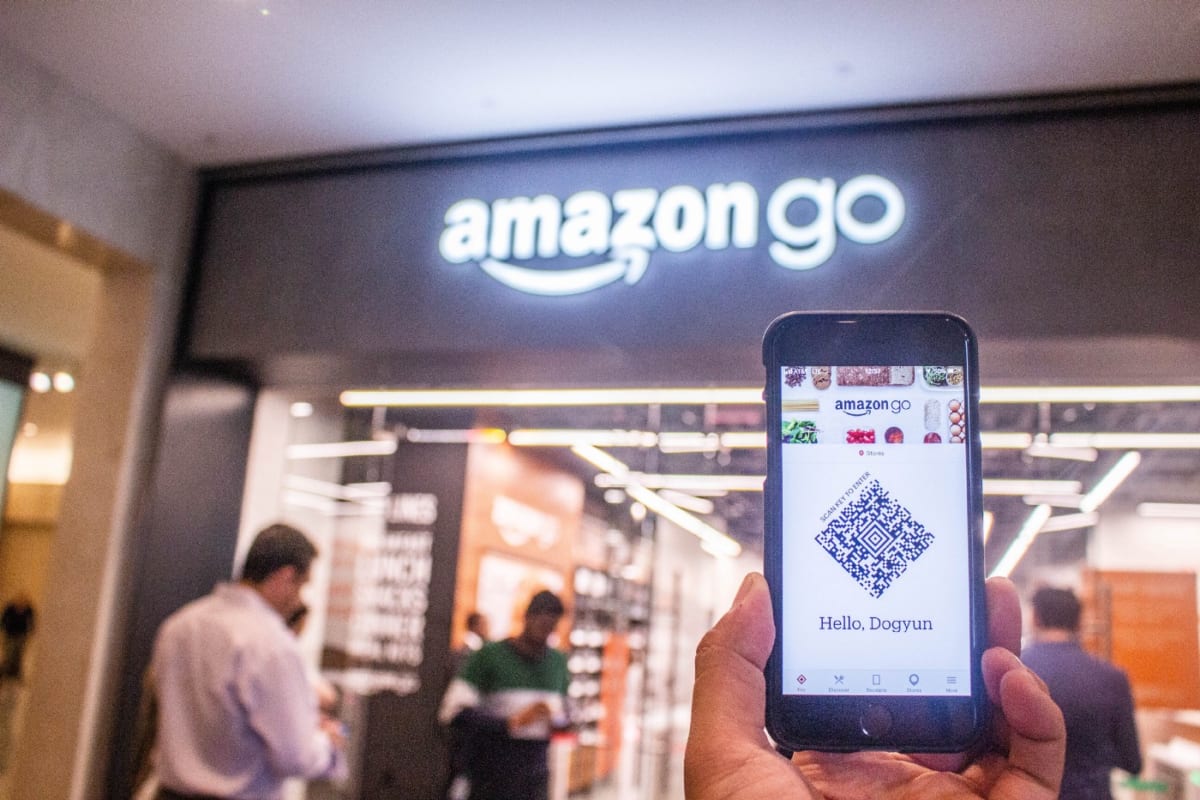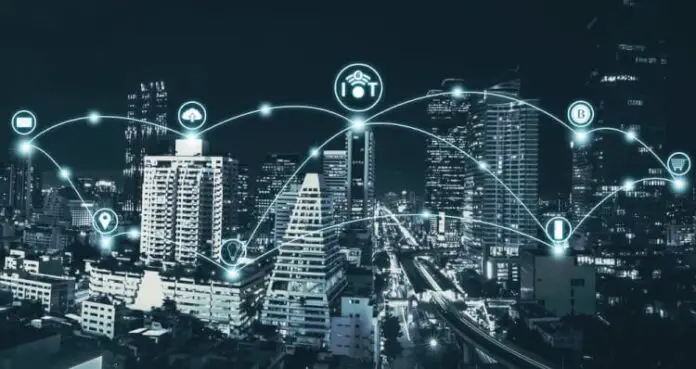Technologies Essential for Smart Buildings
Efforts toward the realization of smart buildings are accelerating with the aim of saving energy and improving operational efficiency. In today’s digitalized world, all kinds of technology have become familiar.
In this article, we will explain the basic outline of smart buildings that lead to optimization by centrally managing IoT and AI data, and introduce representative examples of smart buildings.

What is smart building?
Smart buildings refer to buildings and commercial facilities that utilize the Internet of Things (IoT) to achieve efficient and effective management. Since it contributes to energy saving in the facility, it seems that it is attracting a great deal of attention not only from the perspective of IT and the promotion of DX, but also from the perspective of environmental protection.
Technologies Essential for Realizing Smart Buildings
Smart buildings are based on the latest ICT (Information and Communication Technology). When all kinds of things are connected to the network, information can be transmitted and shared smoothly. “IoT”, “AI” and “robots” are essential technologies for realizing smart buildings. Let’s have a correct understanding of how these core technologies are used in smart buildings.
IoT (Internet of Things)
IoT is the first technology that is essential to the realization of smart buildings. IoT is an abbreviation for “Internet of Things”, which translates to “Internet of things” in Japanese. An IoT system is a technology that connects communication devices installed in physical objects to the Internet and enables information to be linked.
Specifically, it enables remote operation of objects, remote monitoring from a remote location, and transmission and reception of data between objects. It is a technology that forms the basis for realizing smart buildings. Even if the information cannot be seen or touched, it is possible to collect and manage data by installing sensors that quantify the information. IoT technology is used to transmit information to administrators in real time via networks and achieve optimization.
AI (artificial intelligence)
The second technology that is indispensable for the realization of smart buildings is artificial intelligence (AI), which artificially reproduces all human perception and intelligence. AI is good at quickly processing vast amounts of information and finding the shortest path to a clearly defined goal. Therefore, even if there are hundreds of IoT devices used in a smart building, it is possible to quickly analyze the data collected from the IoT devices, control air conditioning and electrical equipment, and detect abnormalities.
Without autonomous monitoring and detection using AI, it is impossible to make full use of large amounts of data. Therefore, AI, which can quickly process various data and find patterns, can be said to be a technology that plays a very important role in realizing smart buildings.
robot
The third technology expected to play an active role in smart buildings is robots. Compared to IoT and AI, robots are still in the early stages of development, but in recent years, when there have been calls for labor shortages due to the declining birthrate and aging population, there has already begun a movement to replace delivery and facility guidance with robots in some areas. The introduction of robots in such smart buildings will be a pioneer in measures to resolve the shortage of human resources.
For example, the sterilization cleaning robot “Whiz” developed by SoftBank Robotics Corp. is a robot that, as the name suggests, undertakes the sterilization and cleaning of facilities. In the future, it is expected to play an active role in facilities where it is difficult for people to enter and exit, such as wards for infected people. In addition, EMIEW, a mobile conversation robot developed by Hitachi, Ltd., is a robot in charge of guiding in the facility. Since it is possible to respond to visitors in multiple languages, it will be especially useful at airports.
Advantages and disadvantages of smart buildings
The realization of smart buildings is useful not only for optimizing energy consumption but also for improving operational efficiency. Not only can you grasp the status of equipment in real time to prevent trouble, but it is also an effective approach to achieving DX. However, there are also disadvantages to building smart buildings. Understand the disadvantages well in advance and be prepared to take sufficient measures.
Benefits of smart buildings
The main benefits of smart buildings are energy saving, operational efficiency, and trouble prevention. Smart buildings automatically check equipment and lamp failures by transmitting information from IoT and AI. If preventative maintenance or replacement is required, the person in charge will be notified smoothly, so manual maintenance work can be greatly reduced.
In addition, since it is possible to visualize the whereabouts of employees such as “who is where”, and the congestion status and reservation status of shared spaces such as meeting rooms and toilets in real time, it eliminates the hassle of moving around the office and improves work efficiency. lead to transformation. In the future, it is expected that more devices will be compatible with IoT and will be used in business.
In recent years, the number of IoT devices has increased explosively around the world, and according to the Ministry of Internal Affairs and Communications, it is expected to increase to 27.49 billion in 2017 and 40.3 billion in 2020. Furthermore, if IoT advances in Japan in the future, it is expected to lead to significant economic growth, so IoT is not just convenient, but will be recognized as an important technology that is indispensable for the future of Japan.
Smart buildings create an environment in which state-of-the-art ICT such as AI, IoT, and robots can be used smoothly. If an IoT network is built, robots and AI with higher performance can be introduced smoothly. In this way, smart buildings are considered to have very high future prospects and are attracting attention.
Disadvantages of smart buildings
The main disadvantages of smart buildings are security concerns and damage caused by malfunctions in the event of trouble. In smart buildings, information is obtained and controlled via the Internet, so security concerns cannot be eliminated. In order to prevent unauthorized access from the outside, it is necessary not only to implement thorough security measures, but also to have appropriate literacy among all users.
In a smart building where IoT networks link and control data from facilities and equipment, failures in the network or system itself can lead to a chain reaction of problems in various locations. In preparation for equipment malfunctions, it is safe to prepare an environment that can be quickly restored by arranging staff who can respond appropriately.
Smart buildings equipped with AI (artificial intelligence)
The construction of smart buildings is one of the trends in the world, and it is said that this need will continue to increase in the future. In Japan, the construction of smart buildings using AI is progressing, leading to success in reducing energy consumption and improving convenience.
Tokyo Port City Takeshiba Office Tower
“Tokyo Port City Takeshiba Office Tower” is a large-scale complex facility with 40 floors above ground, 2 floors below ground, and a total floor area of approximately 180,000 square meters. The facility has realized real-time data acquisition by utilizing AI technology, such as analysis of facility usage by AI cameras and distribution of store congestion. The Takeshiba area has become a national strategic special zone for smart cities , and the Tokyo Port City Takeshiba Office Tower also serves as an important base for making Takeshiba a smart city.
One Taikoo Place
One Taikoo Place, a new mixed-use facility developed by Swire, a major Hong Kong developer, introduced the AI platform Neuron to successfully improve the efficiency and convenience of facility management and operation. Neuron is not only capable of on-the-spot control and information grasping, but also excels at analysis functions such as trend analysis and energy demand forecasting. As a result of implementing building management with Neuron at the command center, One Taikoo Place has achieved a reduction of about 15% in air conditioning energy.
summary
In order to realize smart buildings, it is essential to introduce the latest technologies such as IoT, which plays the role of ears and eyes, and AI, which optimizes each facility based on information. In the future, robots that automatically perform various tasks are also expected to play an active role, and it seems that efforts to make them smarter will continue to spread in the future.






